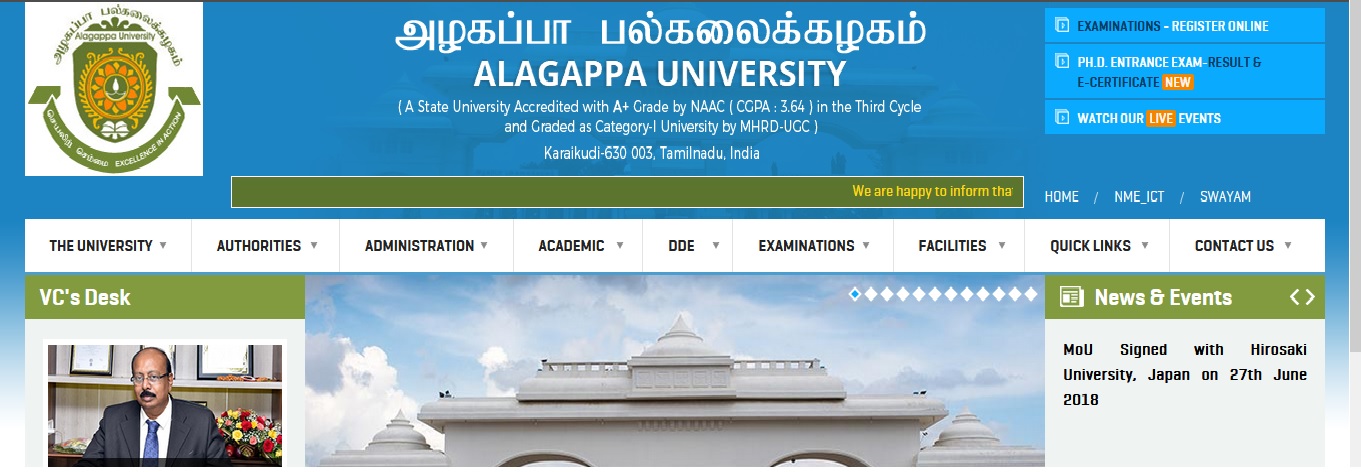Philosophical And Scientific Bases Of Physical Education M.Ed Model Question Papers : alagappauniversity.ac.in
Name of the University : Alagappa University
Degree : M.Ed
Department : Education
Subject Code/Name : Philosophical And Scientific Bases Of Physical Education
Document Type : Model Question Papers
Website : alagappauniversity.ac.in
Download Model/Sample Question Paper : Nov.2011 : https://www.pdfquestion.in/uploads/alagappauniversity.ac.in/4139-1-M.P.Ed.,.pdf
Alagappa Philosophical & Scientific Bases Question Paper
M.P.Ed. DEGREE EXAMINATION, NOVEMBER 2011 :
Physical Education
PHILOSOPHICAL AND SCIENTIFIC BASES OF PHYSICAL EDUCATION
Time : 3 Hours
Maximum : 75 Marks
Part A (10 × 2 = 20)
Related : Alagappa University Research Methodology And Basic Of Nanoscience M.Phil Model Question Papers : www.pdfquestion.in/4136.html
Answer all questions.
1. Definition of ‘‘philosophy”.
2. What is Idealism-
3. Explain motivation and learning.
4. Explain Intelligence and learning.
5. Meaning of sociology.
6. Explain sociology of sports.
7. Definition of ‘‘curriculum”.
8. Role of Administration in curriculum.
9. Importance of curriculum.
10. What is field try out in curriculum

11. (a) Explain Philosophy in Education.
(b) Explain Realism.
12. (a) What is law of learning-
(b) Explain Individual differences in learning.
13. (a) Explain sociological implications of educational sports
(b) Explain group Dynamics.
14. (a) Explain curriculum design.
(b) Explain physical education curriculum in colleges.
15. (a) Explain curriculum Reform.
(b) Explain Appraisal of total curriculum.
16. Explain philosophy in physical education and Body mechanics.
17. What are the theories of learning and Explain.
18. Explain sociological Benefits of sports.
19. Explain physical education curriculum in university.
20. Explain curriculum Experimentation and improvement through
Management Of Physical Education
M.P.Ed. DEGREE EXAMINATION, NOVEMBER 2011
Physical Education
(CBCS – 2010 onwards)
Time : 3 Hours Maximum : 75 Marks
Part A (10 × 2 = 20)
Answer all questions.
All questions carry equal marks.
1. Define management.
2. What is management structure-
3. Define policy.
4. What is supervision-
5. What is planning-
6. What do you mean by physically challenged people-
7. Define budget appraisal.
8. What is fiscal management-
9. Write the meaning of purchase process.
10. Write the meaning of issue process.
11. (a) Explain importance of management.
(b) Discuss effective and efficient management.
12. (a) Write the general and specific qualification –
(b) Write the general and specific qualification of a Coach.
13. (a) Discuss about indoor facilities.
(b) Discuss about outdoor facilities.
14. (a) Explain the importance of office management.
(b) Describe about risk management.
15. (a) Write the guidelines for selecting sports equipments.
(b) Write the guidelines for purchasing sports equipment.
16. Describe the principles for organizing physical education program.
17. Discuss methods of evaluation of physical education and sports program.
18. What are the health consideration to be taken care of –
19. Discuss about budget presentation and adoption.
20. Explain the process of checking, storing, issuing –
Sports Physiology
M.P.Ed. DEGREE EXAMINATION, NOVEMBER 2011
Physical Education
Time : 3 Hours
Maximum : 75 Marks
Part A (10 × 2 = 20)
1. Define ‘‘energy’’.
2. What is aerobic metabolism-
3. Define residual muscle soreness.
4. What is altitude-
5. Define ‘‘slow twitch’’ muscle fiber.
6. What is neuron-
7. Define ‘‘Vital Capacity’’.
8. Differentiate inspiration and expiration.
9. Define ‘‘Stroke Volume’’
10. What is cardiac output-
Part B (5 × 5 = 25)
Answer all questions, choosing either (a) or (b).
All question carry equal marks.
11. (a) Explain oxygen debt.
Or
(b) Discuss the symptoms of fatigue.
12. (a) Describe temperature regulation during hot dry climate.
Or
(b) Discuss role of age and sex on reaction time and movement time.
13. (a) Describe staircase phenomenon or Treppe.
Or
(b) Describe chemical composition of muscle.
14. (a) Discuss ventilatory changes during exercise.
Or
(b) Discuss the mechanism of breathing.
15. (a) Explain the structural properties of the heart.
Or
(b) Describe cardiac cycle.
Part C (3 × 10 = 30)
Answer any three questions.
All questions carry equal marks.
16. Describe energy metabolism during rest and exercise.
17. Write in detail about fiber distribution and performance.
18. Describe the physiological adaptation at high altitude.
19. Discuss the effect of exercise on respiratory system.
20. Describe the effects of exercise on stroke volume, heart rate and cardiac output.
Library Techniques
(CBCS – 2008 onwards)
Time : 3 Hours
Maximum : 75 Marks
Part A (10 × 2 = 20)
Answer all questions.
All questions carry equal marks.
1. Write the importance of libraries in an Academic Institution.
2. What are the functions of public library?
3. What does current Awareness service means?
4. Write the different categories of information sources.
5. What are the differences between CC and DDC scheme of classification?
6. Write few reasons for document classification.
7. Who deviced classified catalogue code and when it was first published?
8. Define dictionary catalogue.
9. What are the functions of periodical section?
10. What are the items included in a library annual report?
Part B (5 × 5 = 25)
Answer all questions choosing either (a) or (b).
All questions carry equal marks.
11. (a) Explain the functions of Academic library.
Or
(b) Explain the implications of five laws of library science in libraries.
12. (a) Write short note on information services.
Or
(b) Explain the secondary information sources.
13. (a) Write the advantages of classified arrangement of books in libraries.
Or
(b) State the reasons for using UDC classification system in technical institutes.
14. (a) Explain few advantages of AACRD.
Or
(b) Explain the difference between subject catalogue and Dictionary catalogue.
15. (a) Explain the principles of library management.
Or
(b) List the important activities involved in circulation section.
Part C (3 × 10 = 30)
Answer any three questions.
All questions carry equal marks.
16. Explain the development of Library in India during 19th century.
17. What are the major information services provided in a Library-Explain.
18. Explain universal Decimal classification schemes merits and Demerits.
19. Discuss co-operative cataloguing with few examples.
20. Describe S.R. Ranganathan’s principles of Library management.